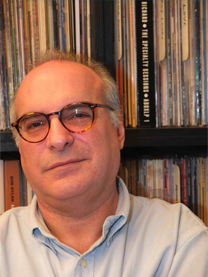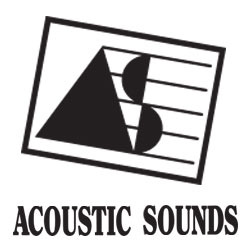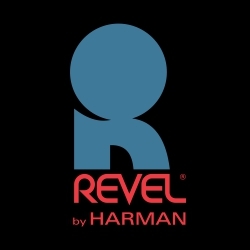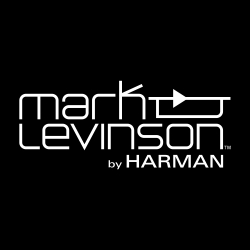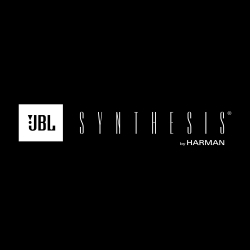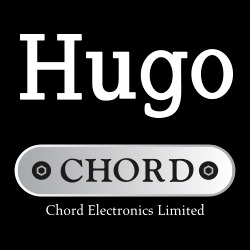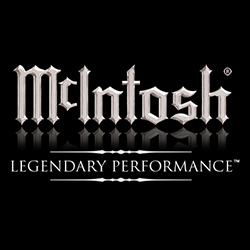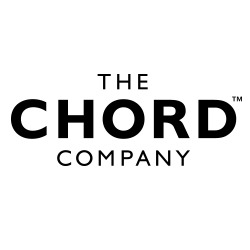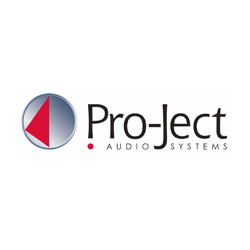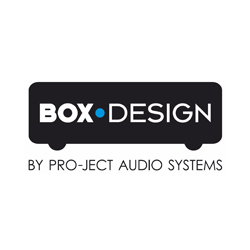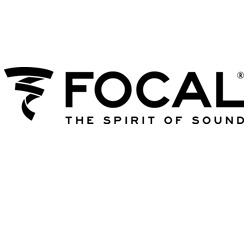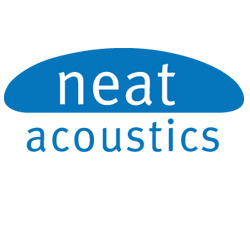Europe likes to think of itself as one giant, happy trade zone. And so it is in many ways, what with the disappearance of trade boundaries, internal duty charges and the like. But it still consists of a number of unique, identity-crisis-riddled territories which insist on autonomy when the mood strikes. This is despite a geographical spread which means that the longest flights within Europe are only around two-and-a-half-hours long. And which is why September came to contain a specialist hi-fi show in London one weekend, followed by shows in Paris, Barcelona and Milan (the latter with a concurrent consumer electronics) the next weekend…followed a week later by a consumer electronics show back in London. And I haven’t even confirmed whether or not there really was a show in Helsinki.
Want an analogy? Just to see what it did to the manufacturers and journalists who try to attend every audio fair in the world? OK: imagine if you will three weekends in a row starting with a show in New York, then shows in Atlanta, Miami and (two in) Chicago, followed by a return to New York the next weekend. Is it any wonder that I, Audio’s Man In Europe, had an awful time deciding which shows I should attend…while maintaining peace and harmony on the home front?
Actually, it was easy: I simply chose the most newsworthy exhibitions. The Hi-Fi Show at London’s Heathrow Airport is Europe’s premier specialist audio show, now in its bar mitzvah year, and it has the highest foreign visitor count after any show outside of the Big Four (the two CESes, Berlin and Tokyo). And remember: this show is pure hi-fi with a smidgen of home theater. No mobile phones, no Nintendo, no digital watches. So you can imagine the wealth of new hi-fi products to drool over in an event with 132 rooms representing nearly 300 brands. To put the Hi-Fi Show into perspective, the Hilton at the Summer CES (where the hi-fi is hidden) had half the number of rooms. Sponsored by Hi-Fi News & Record Review, the Hi-Fi Show has survived UK hi-fi-scene politics to emerge as the showcase for new hardware in Europe.
Top Audio, Italy’s high-end audio fair held in Milan each autumn, is smaller but of similar vintage and prestige. Its strength is the wealth of home-grown hardware and the, well, Italian-ness of the show. There is no more passionate a breed of audiophile than the Italian variety, which might have something to do with an obsession with opera. Top Audio (like The Hi-fi Show) is located out in the sticks, past the point where Milan stops and no-man’s-land begins, but still the crowds arrive to fondle the latest wares.
THE HI-FI SHOW, London’s Heathrow Airport, 8-11 September
Despite train strikes, a major power failure which also took out half of Heathrow Airport and the sheer indifference of the British retail sector, the 1994 Hi-Fi Show had the highest public attendance yet. It was the first time I had to stop cruising the show during the public days because you simply couldn’t get into the rooms. The surprises were plentiful, so those who did struggle with the crowds were amply rewarded.
British shows are, by virtue of taking place in the Home of the Box-type Loudspeaker, heavy with cone-filled enclosures. For whatever reason, the UK is overburdened with speaker designers and the shows are repositories of new ideas. Wilson Benesch, leaders in the use of carbon-fiber, have expanded their business from tonearms and turntables to include a loudspeaker featuring an enclosure made from the woven wonder material. From the front, the forthcoming speaker looks like a “normal” floorstander. Look to the sides and it’s a glimpse of the future, the familiar black composite with its highly visible weave forming the cabinet sides. Rogers responded to a decade-plus’s worth of customer pleading by showing the production version of the AB1 subwoofer for the LS3/5A, a novel solution to marrying that self-contained gem to a boom-box without compromising the mid and treble. With the same cross-section as an LS3/5A (a mere 7.5×6.5in), the AB1 woofer looks like a natural extension of the BBC classic. And it works, too. I don’t want to cause Rogers any trouble in the USA by broadcasting the UK price; suffice to say, the AB1 will cost you only 66% of the price of the LS3/5As themselves.
Not that the innovations were exclusively British. Credo of Switzerland demonstrated its intriguing Corona Ion Tweeter, one of those designs which creates a ‘plasma’ of heated air from a high voltage, high frequency field, with the air expanding or contracting along with the signal. Visitors to the room were not greeted by any excess ozone. AEON Acoustics unveiled the ‘Patented Tubular Starform Loudspeaker Cone’. This driver has its cone embossed with ridges which increase both the surface area and rigidity, while improving the structure to weight ratios. This technology won the Gold Medal for Best Electronic Development at the 20th Salon of Inventions in Geneva in 1992. Speaker systems containing these full-range, self-damping drivers start at around $2000 per pair.
And then there’s the STD1 from Heard Acoustics, which is peculiarly British. A combination of titanium cone tweeters, ATC dome midrange drivers and 8in Bandor woofers, the STD1 has the domestically unfriendly look of a prop from some post-holocaust SF flick. Concessions to styling? Blue paint – that’s it. But the performance is dynamic, sensitive, detailed. Whether or not that’s enough to compensate for the purely utilitarian styling remains to be seen. Suffice to say, the STD1 has put the deserving Heard Acoustics on the audio map.
The Hi-fi Show’s importance is illustrated perfectly by the world scoop produced when McIntosh’s president, Ron Fone, flew over with the mock up of the forthcoming MCD7009 CD transport. This player is based on a TEAC drive and should be ready by the time you read this. But that wasn’t all: Fone also unveiled the prototype of McIntosh’s new integrated amp and let slip news of a laser disc player, the latter probably in time for the Winter CES. The integrated amplifier will be called the MC6800 and will deliver around 150W/channel into 8 ohms. It features full remote control and pre-out facility and it’s pure Mac all the way. Other American manufacturers who made the trip included Dan D’Agostino, launching Krell’s KPS series CD players in the UK, Neal Sinclair of Theta and Bill Conrad of conrad-johnson.
Most of Europe is still tube-crazy, and the Hi-Fi Show was rich with glassware: triodes and pentodes, single-ended designs, balanced designs, kits, budget stuff, units requiring a mortgage. The smallest was probably LA Audio’s wild little in-car tube amp while Gamma’s catalogue listed (but the company didn’t show) a model with a price tag not unadjacent to that of a Mercedes 500SL.
Audio Research chose the Hi-Fi Show as the launch site for the VT150SE, the Special Edition version of the company’s current flagship. Styled to resemble the D150 of yore, the VT150SE features a faceplate so perfect in its retro-ness that I thought the distributor, Absolute Sounds, had borrowed an original D150 for the Show. Also announced was ARC’s first tube D/A converter, the DAC 3, which – as luck would have it – turned up at the Top Audio show the following week.
Unison Research wins (again) the Whacky Styling Award for its luscious Smart 845 monoblock which, Broken English name aside, is a genuine show-stopper. A pure triode Class A design, it delivers 24W from a single 845 tube and features a ceramic ‘chimney’ to keep the tubes’ heat away from the power supply. All Unison Research amps feature real wood accents such as could only have been produced in Italy.
On the solid-state front, TOCA (which stands for Touch of Class A) is a new firm manufacturing absurdly large electronics alongside a range of more domestically-dimensioned alternatives. So big are TOCA’s 300W single-ended Class A monoblocks that I thought I was looking at subwoofers. No kidding: six feet of amplifier dissipating 1700W while idling. Finished in marble, the amp was conceived for audio crazies who think that $30,000 for a pair of coffin-sized amps is normal. After TOCA, the most controversial new amp was the Class A/B monoblock from Dynaudio. Battery-powered, rated at 700W into 8ohms (and 2400 into 2 ohms), it has a UK sticker price $127,500. Its ‘vertical’ chassis looks more like a sleek computer than a piece of hi-fi equipment.
As ever, the accessories provided the freakiest to contemplate. With Milan’s show only a week away, I was treated to a sneak preview in London of the Italian-made Audio Carpet from Aedon Audio. Which is just what it says it is: a carpet. It is supposed to – and I quote – “…improve the acustical (sic) features of the expecially (sic) with higt (sic) quality levels of audio reproduction.” It reads a whole lot better in Italian. Suffice to say, I love it because it looks like a Versace shirt. Give it time and I’m sure it will reveal sonic properties. But perhaps the most impressive accessory of all was an entire concept. Michael Green Design made its UK debut with a whole system consisting of the famous sloped speakers, the BL-2 Line Stage and the A150S power amp and the full range of AudioPoints mechanical grounding devices, RoomTunes and ClampRacks. More than one audiophile/Hi-Fi News reader stopped to tell me that MGA had the most comfortable, nicest-sounding room at the Show.
TOP AUDIO, Quark Hotel, Milan, 15-19 September
After all of the Italian previews in London, was Top Audio an anti-climax? No. The Italians saved plenty for their own show, along with scoops like the aforementioned Euro-debut of the Audio Research DAC-3. Most impressive were two almost uniquely-Italian aspects of the show.
The first was the absolutely breathtaking selection of vintage hi-fi equipment, almost entirely British and American, sponsored by the magazine Audio Review. Choice items from McIntosh, Radford, Leak, Marantz, Quad, Rogers and the like – there were crowds around the imaginative display throughout the show. The second? What amounts to an Italy-only revival in kit-building. Nearly every hi-fi magazine sells kits or publishes designs (or, in one case, provides free hi-fi designer computer programs in the form of a cover-mounted floppy disk) for tube electronics or speakers. And the stuff looks great, a far cry from the funky junk you’d expect of solderheads.
A couple of wild debuts will stick in the memory, including the first truly new tube since the dawn of the transistor: the VV30B. And what the hell is a VV30B, you might be wondering? Simple: It’s a Czech-made drop-in replacement for the 300B, a tube which is at the heart of the current single-ended triode craze. As 300Bs are fragile, noisy and rare (at least, the genuine Western Electric ones are), the demand existed for a better alternative. Manufactured by a company called VAIC, the VV30B betters the 300B in every way, but expect to pay a heart-stopping $480 per tube…
Another eye-opener was the mock-up of Jeff Rowland’s new top-of-the-line pre-amp, called The Consummate, with emphasis on the “The”. Looking truly as if it were carved from solid, the unit’s front panel controls pull away to serve as a remote control. Sure, if you bench-press 250 on a daily basis. Entry into the unit is strictly via balanced inputs and the price will probably have credit-card companies grinning from ear to ear.
In case you think that that roster in the beginning of this report is all that lay in store for the intrepid audio explorer, note that – before Christmas – there are shows in Portugal, Hungary and mainland China. And those are just the ones I know about. Then it’s CES Time again. In case you think that the collective hi-fi imagination is running dry…forget it.
Mondo Audio, indeed.
(Audio, December 1994)
